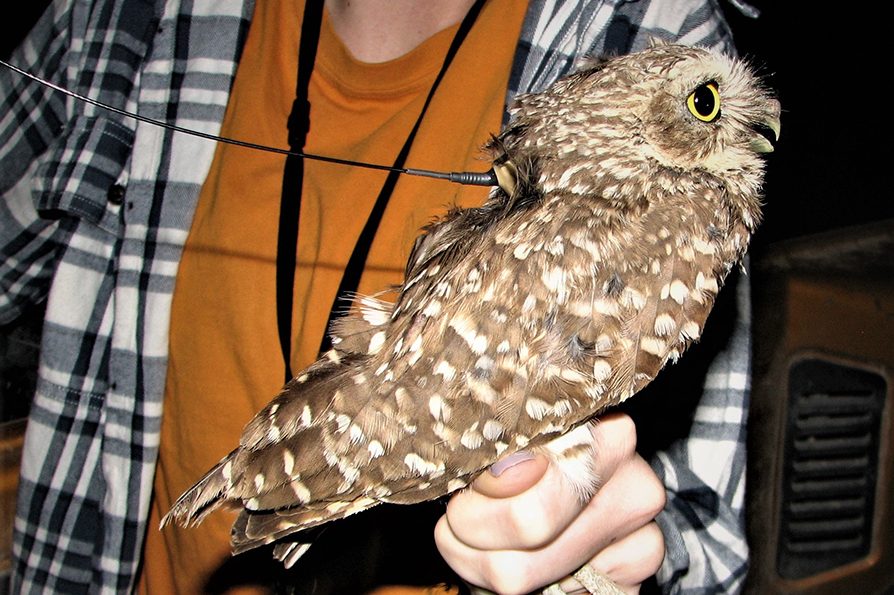Council for the Conservation of Migratory Birds presents national federal stewardship award annually
A submission by NNSS Biologists Derek Hall and Jeanette Perry — titled “Burrowing Owl and Winter Raptor Monitoring on the Nevada National Security Site ”— has been named one of just three finalists for the Council for the Conservation of Migratory Birds’ Presidential Awards.
“I was aware of these awards and thought, ‘Let’s give it a shot,’” said Hall, who’s “studied everything from mosquitos to mountain lions” since joining the NNSS in 1994.
As the NNSS moves forward on vitally important mission work in the areas of stockpile stewardship and nuclear nonproliferation, among others, it’s the NNSS’ biologists who — with an eye toward environmental impact — help lay the groundwork. Before any new project begins at the Site, NNSS biologists do a survey to determine what could be impacted and how to mitigate the loss of important plant and wildlife resources.
“We’ve been doing some great work for many years,” Hall said. “It’s nice to receive some national recognition for our findings.”
Recognizing federal stewardship and migratory bird conservation projects from throughout the United States, the awards will take place virtually, during the next annual council meeting in 2021. Each nominee will present their project at the meeting, and a winner will be selected by the Council — made up of several federal agencies—and announced then and there.
The NNSS’ submission includes two studies: burrowing owls and winter raptors.
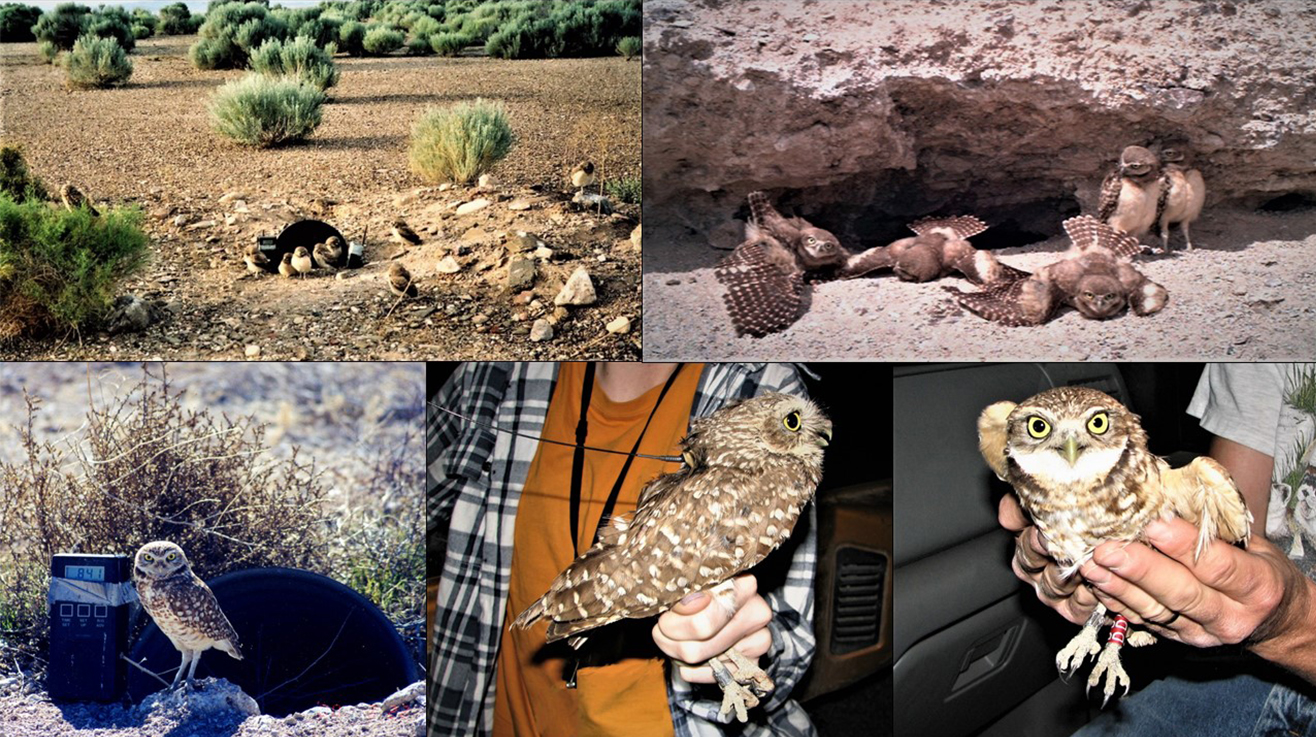
BURROWING OWL STUDY
This portion of the NNSS’ submission builds upon research that began on the NNSS as early as 1995. At that time, burrowing owls were listed as a candidate species for the Endangered Species Act. Essentially, their populations were declining in many parts of their range, but not enough information was available to explain why.
While burrowing owls were known to occur at the Site, little information was known about their status or ecology, so the NNSS — proactive on learning about species not yet listed — decided to find out more. Hall launched an exhaustive study, visiting known burrows and searching for new ones. The team installed motion-activated cameras and temperature probes at burrow sites and studied regurgitated pellets to learn more about what they were eating. The resulting published report detailed the owls’ food habits, burrow use, reproduction and activity patterns — all information that allows the NNSS to identify the disturbance impact of proposed work.
In 2005, Dr. Courtney Conway of the U.S. Geological Survey (USGS) received a grant to study burrowing animals throughout Department of Defense and Department of Energy lands. He was particularly interested in looking at migratory linkages — how burrowing animals are linked throughout North America. Suitably, Hall partnered with him. This study continued through 2008.
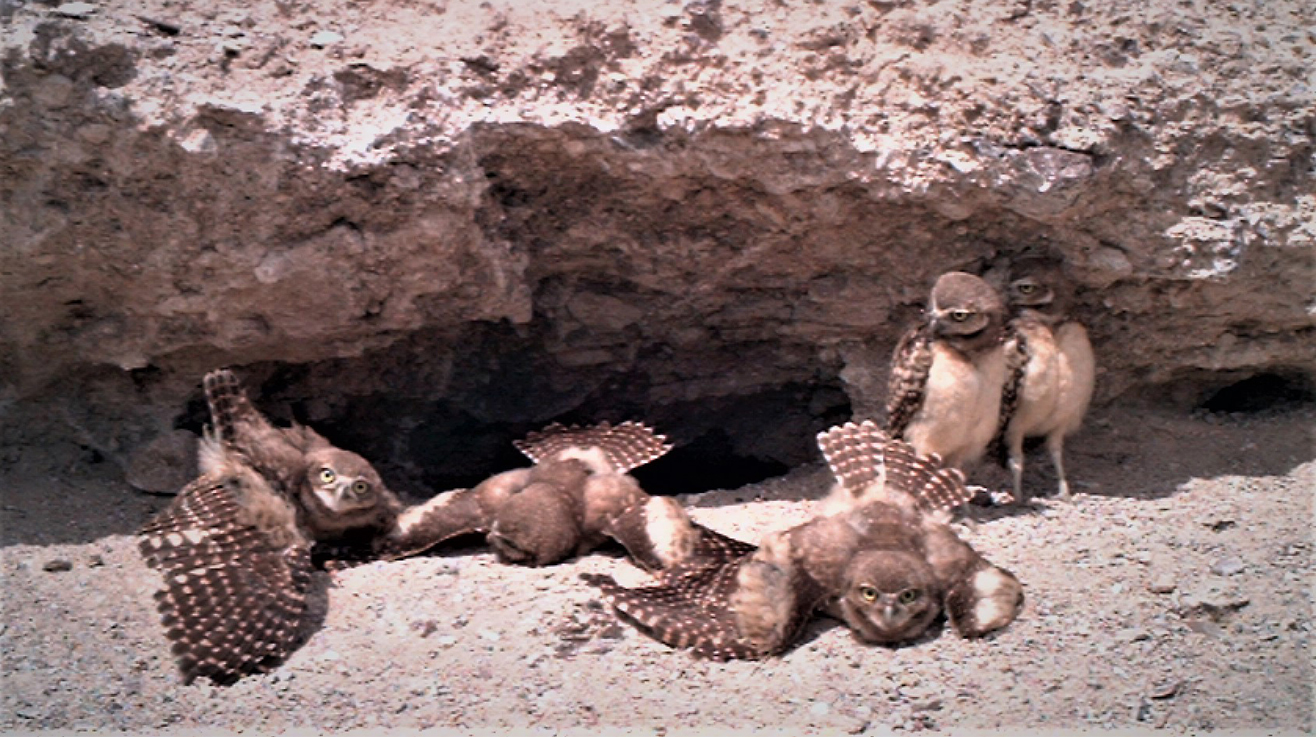
In 2018, Conway shared with Hall a new industry technology he’d begun working with: tracking owls with satellites. Intrigued, Hall brought the technology to the NNSS.
Wanting to know where the Site’s burrowing owls wintered, in June 2019 Hall equipped seven owls with satellite-trackable transmitter, each powered by a tiny solar panel.
“When putting on a transmitter, you have to be careful. You don’t want to impact the bird’s ability to fly and hunt,” Hall said, adding that trackers can weigh no more than 5 percent of a bird’s body weight.
With that in mind, the transmitters used in Hall’s study weigh in at just 5 grams.
Of the seven owls, three wintered in Mexico’s Baja Peninsula and three in Southern California. The seventh owl is thought to have wintered on-site.
The birds who traveled elsewhere all made it to their destination within two to three weeks, and the satellite transmitters allowed Hall to document their migration routes. Of the six who left, one male returned to the Site, within a mile of his home the previous summer. He mated with a different female than last year, and they had five chicks. One of the other six continues to call Nevada home as well and is currently residing just northeast of Tonopah.
Two of the seven transmitters are still functioning, and Hall hopes to purchase another six to repeat the study —again on burrowing owls — this June.
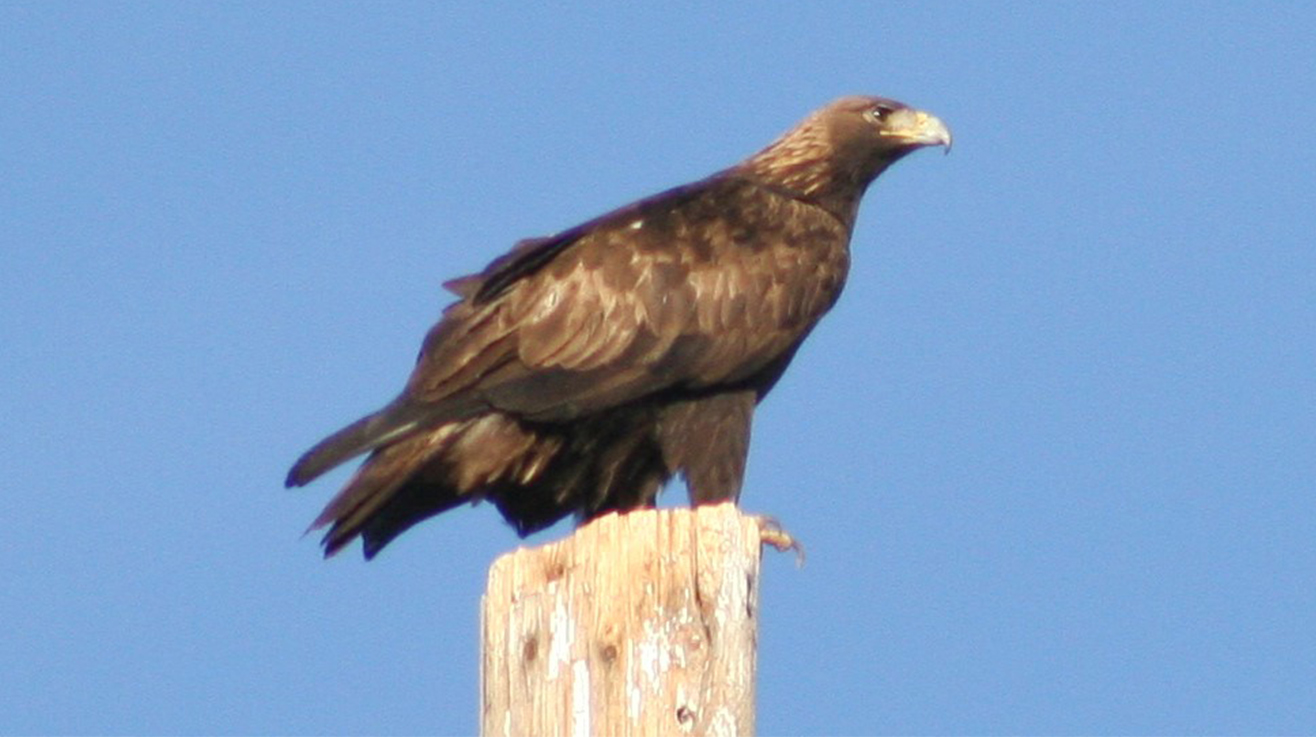
WINTER RAPTOR STUDY
This study lays the foundation for learning about climate change through studying bird migratory habits. Biologists currently hypothesize that as the earth continues to warm, an increasing number of southern birds will be seen in northern areas to which they never previously would have migrated.
The NNSS partnered with the Nevada Department of Wildlife (NDOW) starting in 2014 to build upon work NDOW had already been doing throughout the state since 1994—originally begun with the intent to study declining raptor populations.
“Nevada is a great place for raptors to winter,” Hall said. “It’s warmer, there’s little snow cover, and there’s plenty for them to eat.”
The NNSS’ collaboration on NDOW’s work provides them with data on land that’s otherwise inaccessible. Over a seven-year period, the NNSS’ biologists studied the Site’s winter raptor community to determine which raptors visit on a consistent basis. (Answer: there are six—golden eagles, red-tailed hawks, prairie falcons, northern harriers, American kestrels, and burrowing owls.)
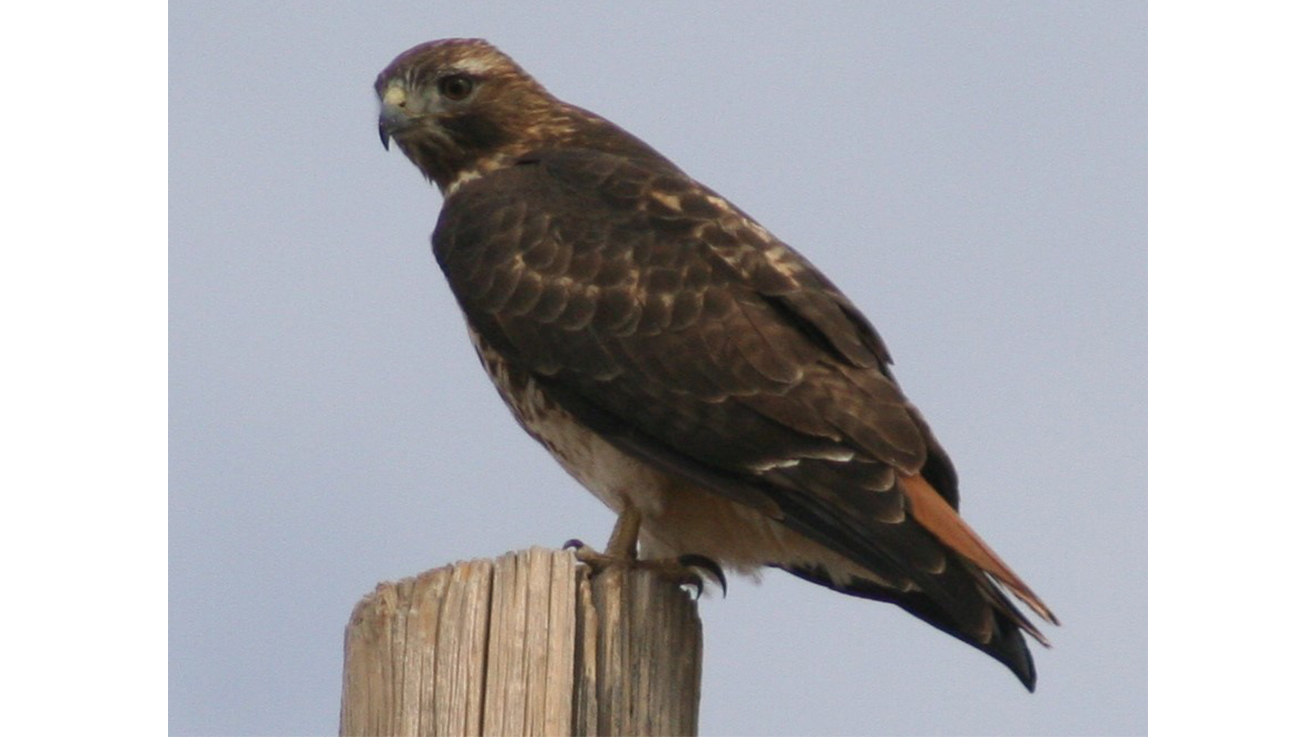
The golden eagle, which is protected by the Migratory Bird Treaty and the Bald and Golden Eagle Protection Act, is also of great interest to many federal and state agencies. The U.S. Army Corps of Engineers sponsors winter counts of bald eagles and golden eagles throughout the United States, so the NNSS’ data feeds into that effort as well.
The interagency collaboration has yielded good data and established two new survey routes in an area with little known data due its inaccessibility to the public. The NNSS plans to continue this area of study for the foreseeable future.
